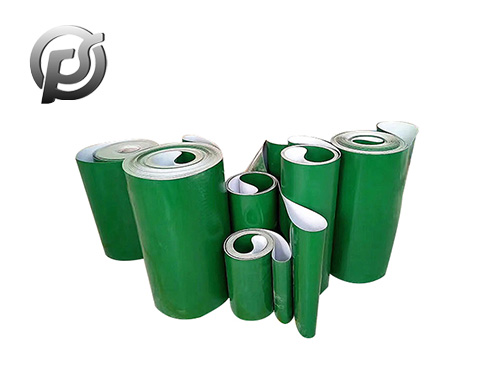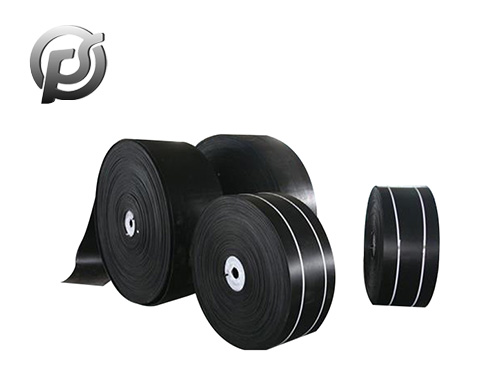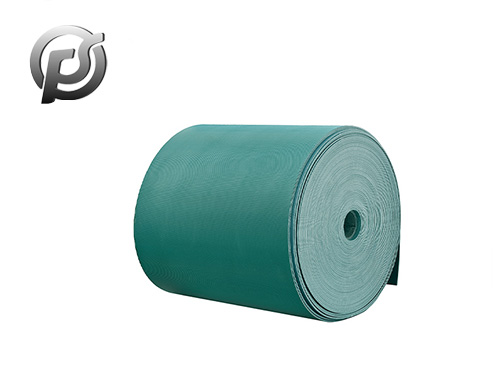When it comes to the replacement of belt conveyor, we may be more familiar with these traditional replacement methods:
1, the new belt is supplemented by the old belt recovery distribution replacement method
The old belt recovery and the new belt laying are carried out separately. All the old belts to be replaced will be pulled out for recovery and the new belts will be laid on the conveyor with the traction device
Disadvantages: the process is more complicated; Construction site is limited to the nose or tail of the engine, can be poor selectivity; Input manpower and material resources; The influence time is longer; For conveyor belt replacement at different locations in flat and inclined lanes, the process versatility is poor and the safety factor is low.
2. New tape section connection replacement method
Replace the new belt side laying side connection, and the replacement work can only be in the nose or tail construction, disconnect the old belt, the first volume of the new belt and one end of the old belt connection; Pull the other end of the old belt until the new belt of the first roll is fully unfolded, and connect one end of the new belt of the second roll with the other end of the new belt of the first roll; According to the above replacement method, the part or the whole new belt that needs to be replaced is laid on the conveyor.
Disadvantages: there are many cycles of the construction process, more manpower input, long production time, and large limitations in the selection of the construction site. When the conveyor belt of the inclined lane transport is replaced, such as the replacement site is selected in the nose, fixture must be installed to reliably fix the old and new conveyor belts to prevent the occurrence of automatic sliding accidents.
3. Stacking tape replacement method
Overlapping tape replacement method. Rely on its own driving device, (low speed) start the belt conveyor, the new belt stacked on the old belt (or under the old belt), using the driving device to make the old belt rotation into the new belt, disconnect the old belt connected with the new belt, with the friction between the old and new belt, then the driving device to make the new belt rotation and export the old belt.
Disadvantages: When laying the new belt, it is necessary to ensure that the new and old belts at the inlet of the belt are completely stacked together, otherwise, it is easy to run off and damage the new belt in the process of putting the new belt. The replacement of conveyor belt in inclined alley with this method is easy to cause the old belt to relax in the tail part of the machine and the residual belt to be involved in the roller, and the processing process is time-consuming and difficult.
Features and benefits of the new conveyor belt replacement method:
The belt replacement method of the new conveyor can be determined in four ways in different parts of the conveyor according to the site environment and conditions, by entering the new belt and leaving the old belt when replacing the conveyor belt. Either way, the connection of the new belt can be completed in advance in a section of the construction site with a long "s" type of overlay laying method.
1, the nose into the new belt, the nose out of the old belt
New belt conveyor head before the above set-up recycle production with simple support frame, the traction device installed on the conveyor head, change with time, since the old belt conveyor head connection, connect the new and old with a good, old take the other end connected to the traction device, through traction device with new old and laying out work, finally complete the connection of the new belt
Application conditions: This mode is suitable for the replacement of the conveyor belt of the flat lane transportation mode and the upper and lower transportation mode.
2, the tail into the new belt, tail out of the old belt
On new after the tail roller conveyor belt production set-up a recycle with simple support frame, the traction device installed on the conveyor from the tail roller distance place, change with time, since the old belt conveyor tail connection, brought new a head and old with a good connection, will the old take the other end connected to the traction device, through traction device with new old and laying out work, Finally complete the connection of the new belt, tail into the new belt, tail out of the old belt replacement method.
Application conditions: This method is suitable for the replacement of conveyor belt in flat lane and upper transportation mode.
3, the middle section into the new belt, the tail out of the old belt
In the middle of the conveyor frame production to install a set of simple guide Angle, the traction device installed in the tail place a certain distance from the drum, change with time, the old belt from the tail off, the old with a good head and traction device connecting the conveyor pull out below, as the old take the other end to the simple guide Angle, then a new belt take the lead in connection with, The new belt is laid and the old belt is pulled out by the traction device, and finally the new belt is connected. Middle section into the new belt, tail out of the old belt replacement method.
Application conditions: This method is suitable for the replacement of conveyor belt in flat lane, upper transportation and lower transportation.
4, the middle segment into the new tape, the middle segment out of the old tape
Install the draught device in the middle of the conveyor section, in the middle of the into the new, the old place on the installed a set of simple guide Angle, change the belt from the old belt conveyor middle rack (or lower) disconnect, then the old with a good head connected with traction device, through traction device to complete the new tape laying belt and old tape pull work, finally complete the conveyer belt connection, New tape in the middle section and old tape out of the middle section.
Application conditions: This method is suitable for the replacement of conveyor belt in flat lane, upper transportation and lower transportation.
To sum up, compared with the traditional replacement method, the new replacement method has the following characteristics:
① In the selection of construction site, according to the actual construction conditions and the transportation mode of the conveyor, it can be determined in the head, tail and middle section of the conveyor, which is flexible and diverse, selective and targeted.
(2) The new replacement method is used to connect the new belt in advance, and the replacement only needs to complete the work of entering the new belt and taking out the old belt. The construction process is simple, quick, convenient, high efficiency and good economy.
(3) The new replacement method puts forward the whole new belt (or whole section) to connect the old into the new law, which is scientific and reasonable, practical, safe and efficient.
 Optimizing Operations with PE Conveyor Belts: Durability, Efficiency, and Versatility
Optimizing Operations with PE Conveyor Belts: Durability, Efficiency, and Versatility
 Exploring the Efficiency and Versatility of Light Conveyor Belts
Exploring the Efficiency and Versatility of Light Conveyor Belts
 Polyester Conveyor Belts: Enhancing Efficiency and Reliability in Material Handling
Polyester Conveyor Belts: Enhancing Efficiency and Reliability in Material Handling